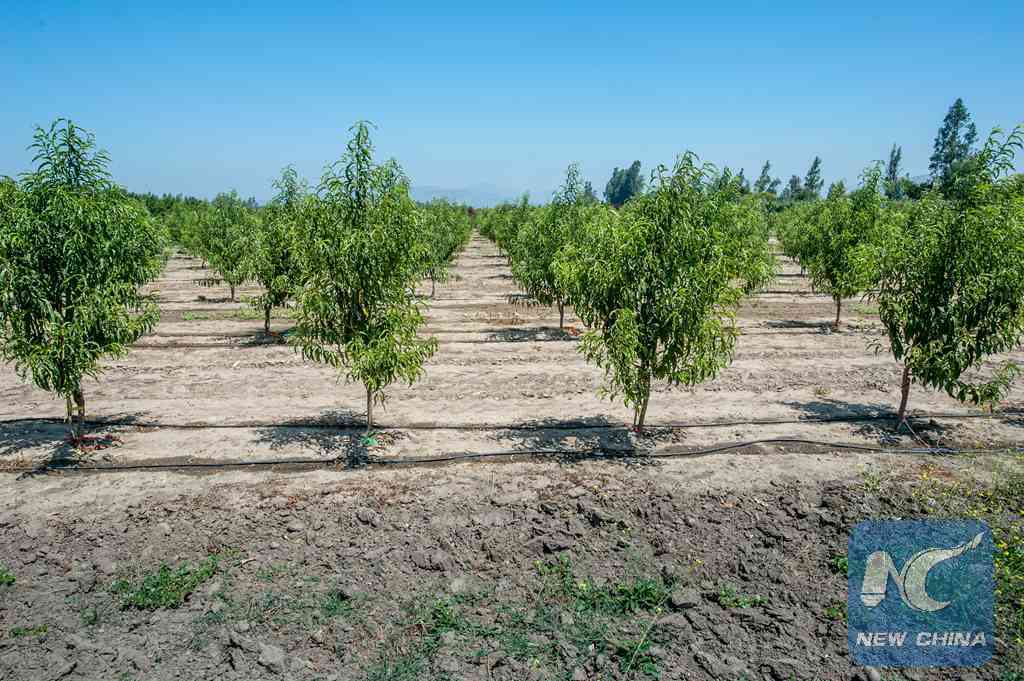
Image taken on Jan. 22, 2013, of cherry trees growing in an orchard, in Rancagua, Chile. (Xinhua/Edwin Remsberg/VW Pics/ZUMAPRESS)
SANTIAGO, Nov. 19 (Xinhua) -- Cherries have in recent years become a mainstay of trade between Chile and China, with Chilean cherry growers reserving a large part of their harvest for the Asian market.
That's the case with Rucaray, a cherry grower in Rancagua, a town about 100 km south of the capital Santiago, which has been exporting cherries to China for 14 years.
The company, which ships as much as 82 percent of its crop to China, boasts a modern processing plant that employs mainly women to clean and pack the fruit.
Ricardo Vial, commercial director of Rucaray, told Xinhua that businesses with China have led to "great development" of its planting fields along with increased employment.
"China gives us stability, (and) it has helped us grow and diversify by producing other products," said Vial.
The Chinese market, he added, "has allowed Chile's fruit producing sector to breathe a sigh of relief," at a time marked by production difficulties and exchange rates disadvantages.
Chile, which has 24,000 hectares of cherry crops and plans to plant more, needs to expand its export markets beyond the United States and Europe, said Vial, who has been to China for four times and likes "the Chinese way of developing person-to-person relations."
Nowadays, Chile also caters to markets such as China and Southeast Asia, thanks to a free trade agreement signed in 2005, which significantly increased its foreign trade and turned China into its leading trade partner.
This year, many charter planes are flying cherries from Chile to China. According to statistics provided by the Cherry Committee of Chile's Association of Fruit Exporters, the 2016 export season is expected to achieve a volume of some 100,000 tons of cherries.
According to Vial, the air freight cost of cherries is 3.60 U.S. dollars per kilogram when there is not much demand, which varies every week.
The problem is that there are no direct air routes from Chile to China. Ocean shipping, meanwhile, costs 1.30 dollars per kilogram, but takes about 22 days.
Since cherries cannot be stored for a long time, special bags have been made to keep the fruit fresher, which makes ocean shipping that could take as long as 30 days an acceptable alternative. The fruit can then be stored for another 20 days in the refrigerator.
Rucaray has exported 20 million five-kilogram boxes of cherries since the beginning of this year, despite the less than ideal climatic conditions. The company is also involved in wine production, mainly for the Chinese market.
"Exports to China have been growing each year. This year, we could have had the potential to export much more, but weather conditions affected the way of production as well as our expectations," said Vial.

